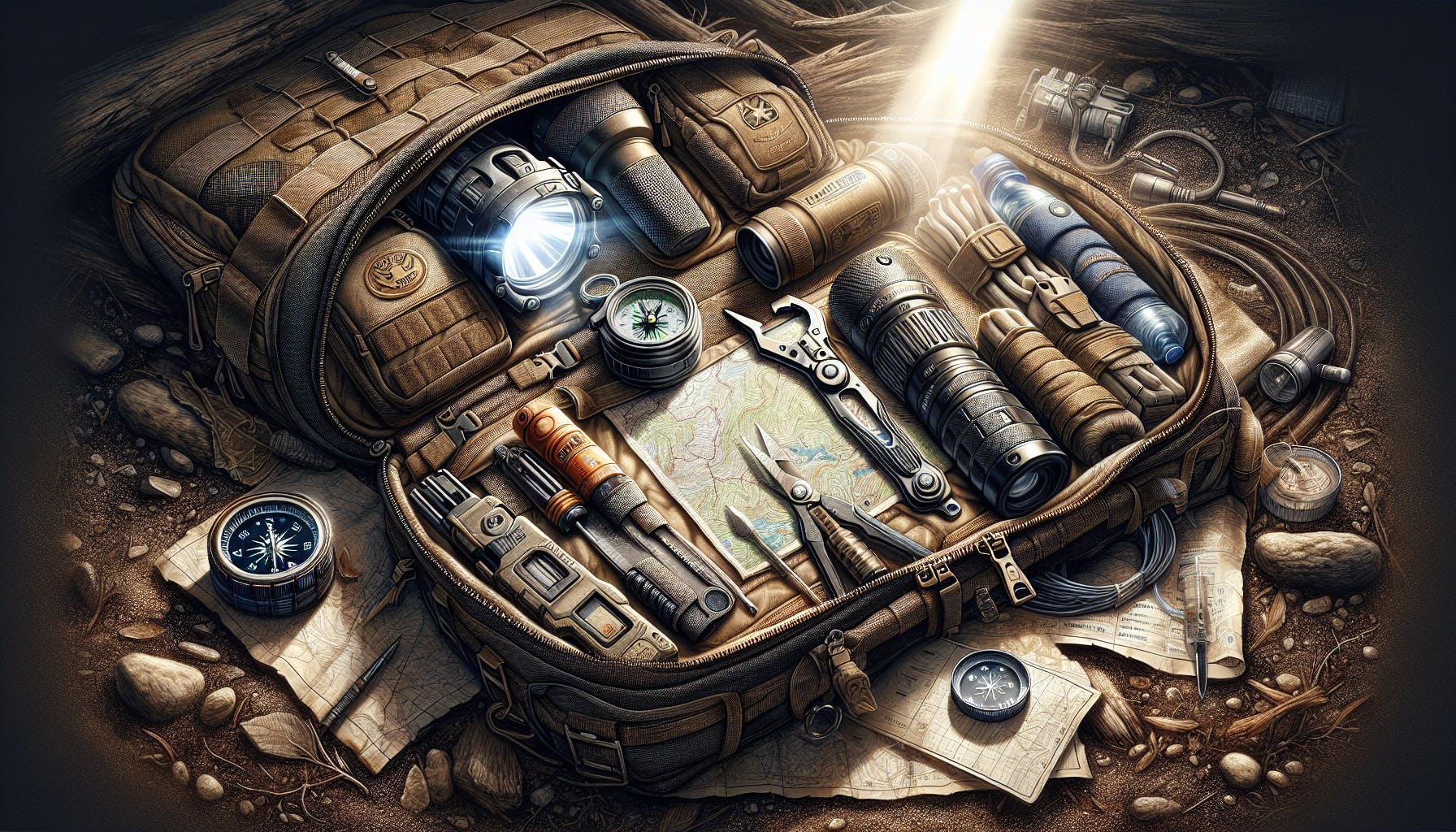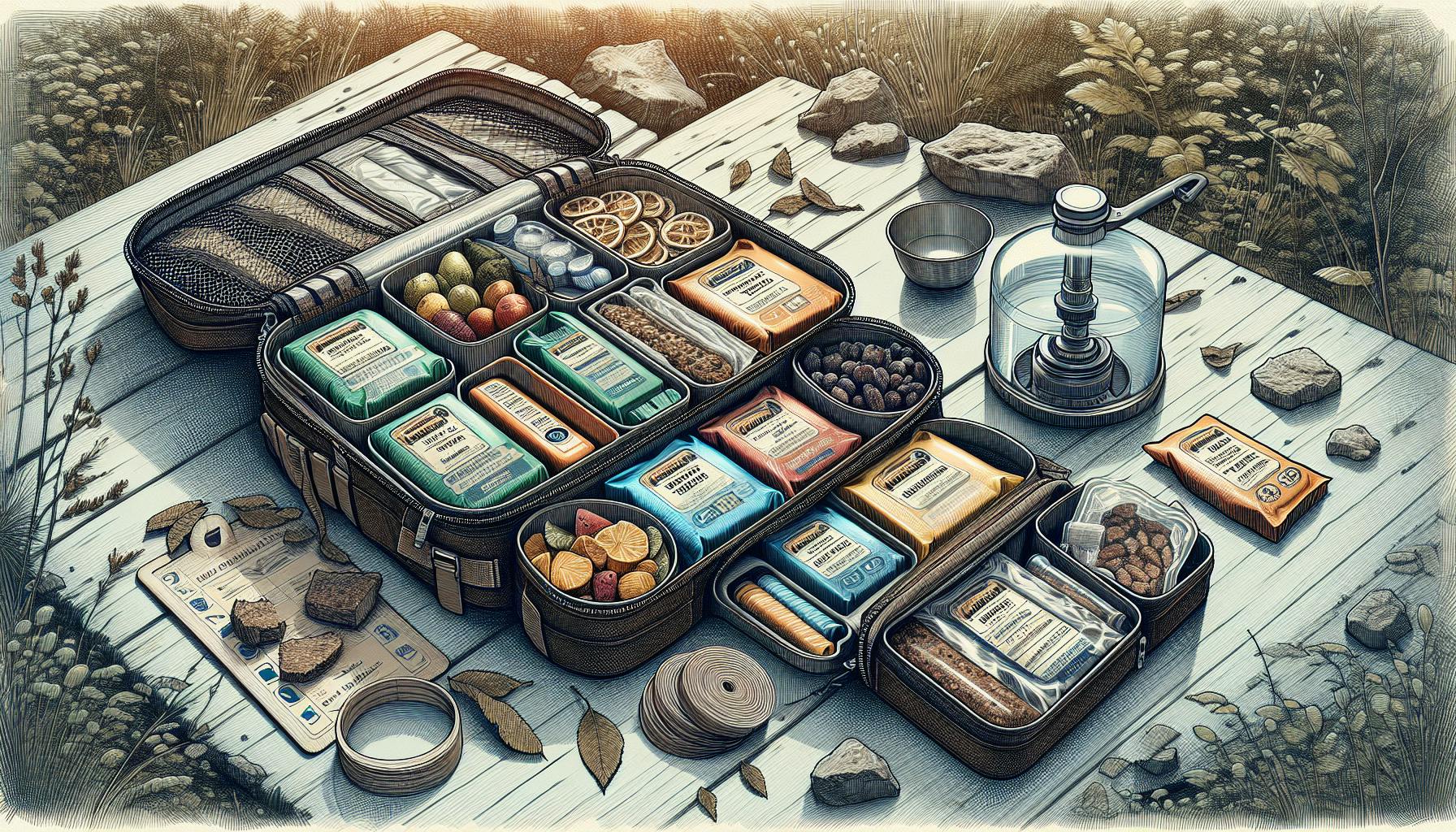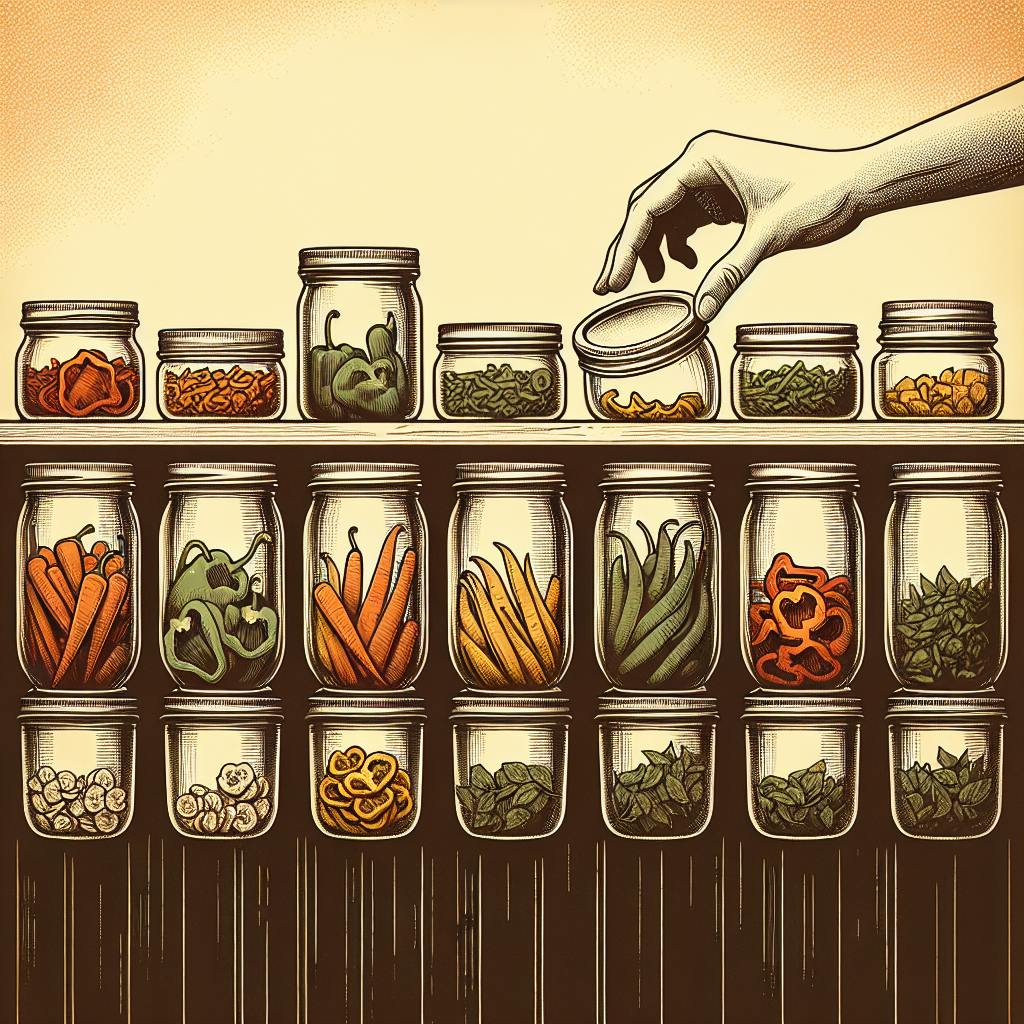When starting out as a prepper, it's understandable to feel overwhelmed about acquiring the right gear.
This guide will provide new preppers with a practical overview of the essential categories of supplies, helping them build an effective beginner's survival kit.
We'll cover the core basics across areas like water, food, shelter, navigation, safety, medical, energy, and more - equipping you with knowledge to navigate the key prepper gear decisions.
Introduction to Prepping Gear Essentials
Prepping refers to preparing for emergencies or disasters by stockpiling necessary supplies. Having the right gear is crucial for survival, as it allows you to provide for basic needs if traditional supply chains are disrupted. As a beginner prepper, starting out with some key supplies can help you build a foundation of preparedness.
Understanding the Prepper Mentality
The prepper community prioritizes self-reliance, survival skills, and establishing contingency plans to handle emergencies. Preppers recognize the unpredictability of life and seek to mitigate risks through thoughtful preparation. This prepper mentality manifests in stocking up on gear, learning first aid, researching evacuation routes, and more. Joining prepper forums and groups can provide community, advice, and accountability.
The Best Prepper Supplies for Beginners
When first getting into prepping, focus on securing basic necessities:
- Water filtration (e.g. Lifestraws, Sawyer filters) and water storage containers
- Shelf-stable foods (e.g. beans, rice, canned goods)
- First aid kits with bandages, gauze, ointments
- Multitools like Swiss Army Knives
- Emergency radios for weather/news alerts
- Flashlights and headlamps with extra batteries
- Fire starters and waterproof matches
- Gas masks and protective equipment
- Mobile power banks to charge devices
Start with a 2-4 week supply and build up over time. Rotate and replace items before expiration.
Assembling Your First Survival Gear Kit
A bug out bag contains the essentials for evacuation. A get home bag provides supplies for navigating back home if away when disaster strikes. 72-hour kits cover 3 days, the typical emergency response window. Tailor kits to your location, skills, needs. Basic components are water, food, first aid, tools, power, lighting, navigation, shelter. Purchase durable bags and cases to hold gear. Organize items efficiently for quick access when needed.
As a beginner, start small by compiling a basic 72-hour kit, then expand into more specialized kits over time. Develop skills to properly utilize your gear through hands-on practice like fire drills, injury simulations, and overnight trips. View prepping as an ongoing journey rather than a fixed destination.
The Prepper Gear List: Categories to Consider
As a new prepper, having the right gear is essential for survival preparedness. When building your supplies, focus first on securing basics like water, food, and shelter.
Securing Water: Storage and Filtration Solutions
Water is critical in an emergency. Consider storing bottled water as well as setting up rainwater collection systems. Portable water filters like lifestraws allow you to filter water from lakes, streams, etc. Choose filters that remove bacteria, viruses and heavy metals from found water sources.
Food Reserves: Stockpiling and MRE Options
Stockpile non-perishable foods with long shelf lives like beans, rice, oats, peanut butter, etc. Have at least a 3 month supply. MREs (Meals Ready to Eat) are portable, calorie-dense survival food rations. Go with name brands that offer complete nutrition.
Shelter Essentials: Choosing Your Survival Haven
In a bug out situation, you'll need portable shelter. Focus on weatherproof tents, tarps and sleeping bags suited for your climate. Prioritize durability, weight and packability as you'll need to carry these on the go.
Having the essential gear for water, food and shelter establishes a foundation for emergency preparedness. Continue expanding your supplies as you advance in your prepping journey.
Navigating the Wilderness: Essential Survival Gear
As a new prepper, having the right navigation and communication gear can make all the difference when facing an emergency situation or getting lost in the wilderness. This equipment helps you stay connected, informed, and on track when cell towers, electricity and other infrastructure goes down.
Communicating in Crisis: Two-Way Radios and More
Two-way radios allow you to communicate with others nearby without relying on cell networks. Handheld models like walkie-talkies are affordable and portable options. For longer range communication, base station HAM radios can transmit messages over hundreds of miles. Consider getting licensed as an amateur radio operator for legal access to HAM bands during emergencies.
Having a hand-crank or battery-powered radio provides a reliable communication backup. Some popular prepper radios include the Midland ER310, with a range of up to 30 miles, and the DeWalt DXR, a rugged device made for harsh work sites.
Staying Informed: Emergency Weather Radios
A critical piece of survival gear is an emergency weather radio for tuning into NOAA broadcasts. These battery-powered or hand crank devices receive warnings and alerts even when the power goes out. Some top models like the RunningSnail Solar Crank Radio have built-in LED flashlights, phone chargers and SOS alarm features.
Consider a weather radio's reception range, power options, durability and extra tools like flashlights when making your prepper gear list. Having one on hand ensures you can stay informed about approaching storms or other threats.
Directional Tools: Maps, Compasses and GPS Devices
When heading out into the wilderness, always carry prepper supplies like maps, a compass and a GPS device. Topographic maps outline landscape features in detail, while a compass helps orient your direction when landmarks aren't visible. Handheld GPS units with spare batteries pinpoint your location via satellite when cell signals drop out.
Waterproof map cases, military-grade lensatic compasses and Garmin inReach devices are excellent navigation Best prepper supplies. Take time to practice terrain association using maps and compass techniques before an emergency. Having these basic directional tools on your Prepper gear list prevents getting lost when cell towers and power grids go offline.
Ensuring Safety: Security and Self-Defense Prepper Gear
In an SHTF situation, having the right personal safety gear can help ensure protection for you and your loved ones. When choosing prepper gear for security and self-defense, focus first on reliable firearms and ammunition.
Arming Yourself: Firearms and Ammunition
A versatile handgun like a Glock 19 is a practical choice for a primary firearm. Consider 9mm ammo for availability and affordability. Stock up on a few hundred rounds initially, then set a goal to accumulate 1,000+ rounds over time. Proper storage and maintenance are also key - invest in a gun safe and cleaning kit.
Non-Lethal Alternatives: Pepper Spray and Tasers
While firearms have advantages for self-defense, non-lethal options like pepper spray and tasers provide more flexibility. Pepper spray is an affordable prep - choose a fogger-style spray for maximum stopping power. Smaller pepper spray canisters work well for everyday carry. Tasers can immobilize threats from a distance while avoiding permanent harm.
Everyday Carry (EDC): Practical Self-Defense Tools
Round out your personal safety prepper gear with EDC items for practical protection on-the-go. A sturdy folding utility knife and slim LED tactical flashlight make useful additions. Other EDC ideas include heavy-duty gloves, a loud emergency whistle, and even a tactical pen for self-defense. Having reliable gear close at hand can buy precious time in an emergency.
Investing in sensible security and self-defense prepper gear brings peace of mind that you have done your best to keep yourself and loved ones safe, no matter what happens. Choose options that fit your budget, laws in your area, and personal comfort level.
sbb-itb-b932644
Health and Wellness: Medical Prepper Supplies
Having the right medical supplies and training is critical for managing injuries in a disaster when professional medical care may be delayed or unavailable. Being prepared can help save lives.
First Response: Building Your First Aid Kits
A well-stocked first aid kit is essential for any prepper. Here are some must-have items:
- Bandages: Include a variety of bandage sizes, as well as gauze and medical tape. These will be useful for dressing wounds.
- Antiseptic wipes: Keep cuts and scrapes clean to prevent infection. Look for single-use packets that are easy to pack.
- Medications: Pain relievers, anti-inflammatories, antihistamines, and digestive medications can all provide relief for common ailments.
- Medical tools: Tweezers, scissors, a thermometer, and latex gloves are handy for examinations and minor procedures.
- Specialty items: Consider quick clot gauze and tourniquets for serious bleeding control. Have SAM splints for fractures.
Rotate and check supplies every 6 months to keep them effective. Tailor first aid kits to your skill level and needs.
Trauma Management: Advanced Wound Care
For serious injuries like life-threatening bleeding, prompt action is vital. Prep with these supplies:
- Tourniquets to restrict blood flow to extremities for severe bleeding. Practice proper placement.
- Hemostatic agents like quick clot gauze to encourage rapid clotting.
- Pressure dressings to stem bleeding for less critical wounds.
Take wilderness first aid or tactical combat casualty care courses to prepare for field medicine. Know how to assess injuries, stabilize patients, and transport if possible.
Cleanliness is Key: Sanitation and Hygiene Products
Good hygiene prevents illness. Stock up on:
- Soap and sanitizer to maintain cleanliness without running water.
- Protective items like masks, gloves, and boots for handling waste or contagions.
- Personal care products like toilet paper, feminine products, and diapers. Plan for at least a 3 month supply.
Store supplies in waterproof containers and bags. Have a designated area for waste disposal. Proper sanitation habits are vital when infrastructure fails.
Power and Illumination: Essential Prepper Gear for Energy
Backup power sources and lighting are critical for preppers when the grids fail. Here are some key solutions to enable energy independence.
Energy Independence: Portable Generators
Portable generators allow you to generate electricity when the grids are down. Gas generators can power your home appliances, while solar generators offer renewable energy from the sun. Key features to look for include:
- Fuel Type: Gas, diesel, solar, battery
- Output Wattage: Dictates what you can power
- Noise Level: Important if trying to keep a low profile
- Portability: Weight, wheels, handles for transport
Top-rated brands like Generac, Honda, and Jackery offer reliable backup power. Calculate your wattage needs and choose a generator adequate for essentials like lights, fridge, charging, etc.
Lighting the Way: Emergency Candles and Lighting Solutions
When darkness falls, having light sources on hand is vital. Prepper lighting solutions include:
- LED Flashlights: Extremely bright, long battery life. Brands like Fenix and Olight are best.
- Headlamps: Hands-free lighting from brands like Black Diamond.
- Lanterns: Area lighting for rooms or tents. Look for UST 30-Day lanterns.
- Emergency Candles: Long-burning like UCO candles that last 50-150 hours.
Focus on lithium battery powered lighting for longest life. Have a mix of area lighting, headlamps, and handheld flashlights.
Staying Connected: Walkie-Talkies and CB Radios
Communications are key when cell networks fail. Prepper radios like:
- Two-Way Radios: Reliable walkie talkies to stay in contact locally.
- CB Radios: Longer range communication with CB channels and codes.
- Ham Radios: Very long range radios for expert preppers.
High-powered walkie talkies can achieve a few miles range. CB radios add codes and channel access for better groups comms when out of cell range. Begin with quality two-way radios from Motorola or Midland.
Discovering the Best Prepper Stores Online
When it comes to prepping, having the right gear is essential. Finding a reliable source for quality survival supplies can be challenging, especially for those new to emergency preparedness. This guide explores some of the best online and offline options for stocking up on prepper gear.
Top-Rated Survival Gear Websites
Websites like Emergency Essentials, Camping Survival, and The Ready Store offer one-stop shops for all your prepper supply needs. They carry a wide range of products including food storage, water filters, first aid kits, radios, and more. When shopping online, look for sites that:
- Specialize in emergency preparedness gear
- Have been in business for many years
- Offer discreet shipping
- Provide detailed product information
- Have overwhelmingly positive customer reviews
While buying online provides convenience, inspecting gear in person can be invaluable for novice preppers.
Offline Options: Brick-and-Mortar Survival Stores
Outdoor sporting goods stores often have sections dedicated to survival tools and camping essentials useful for prepping. Army/Navy surplus stores also carry rugged gear and MREs. What they lack in organization, they make up for in value. Lastly, gun shops will have supplies that complement firearms like ammo storage cans.
When visiting local stores, have your prepper checklist on hand to stay focused on must-have items. Ask questions from knowledgeable sales staff about usage, reliability, and recommendations too.
Prepper Supplies Checklist PDF: Organize Your Gear
Once you start accumulating survival supplies, it's easy to lose track of what you have. Creating a detailed checklist can help you identify gaps in your gear and avoid duplicate purchases. Here's a free printable PDF checklist covering all the basics - food, water, shelter, first aid, lighting, communication, sanitation and more. Download it to inventory what you have and organize future shopping lists.
Taking the time to find reputable online shops and local stores will pay dividends when disaster strikes. Refer frequently to your prepper checklist to build comprehensive supplies tailored to your situation. With the right gear and a little knowledge, you'll gain confidence to deal with emergencies of any type.
Final Tips for Beginner Preppers
Prioritizing Your Prepping Gear Investments
When first starting out, it's important to focus your limited resources on the most essential prepping gear items. Food, water, first aid supplies, and basic shelter should be top priorities. Having at least a 2 week supply of non-perishable food and water stored up provides a critical emergency buffer. A well-stocked first aid kit prepares you for minor to moderate injuries. And basic shelter gear like tents, sleeping bags, and blankets enables survival if you need to evacuate your home.
As your budget allows over time, you can expand into tools, radios, alternative energy sources, and other nice-to-have gear. But cover the survival basics first.
Educational Resources: Prepper Training Courses
Beyond accumulating supplies, developing useful skills is vital for well-rounded emergency preparedness. Consider investing in formal training courses for:
- First aid - Learn how to treat cuts, burns, breaks, shock, and more life-threatening conditions.
- Self-defense - Build the physical and mental abilities to protect yourself and loved ones.
- Wilderness survival - Gain proficiency in navigation, shelter building, fire starting, hunting/foraging, and other fundamental skills for prolonged time in nature.
Books and online resources have their place as well. But hands-on coaching can accelerate skill development.
Building a Support Network: Join a Local Prepper Community
Getting involved with local groups of like-minded preppers has many benefits. You can:
- Brainstorm ideas and creative solutions.
- Barter supplies and services.
- Share knowledge and train together.
- Provide moral support during difficult times.
Look on sites like Meetup.com for prepper meetups in your area. Or chat with the friendly folks at your local outdoors or gun store to find informal circles.
Having a support network makes the prepper lifestyle more sustainable and enjoyable. You don't need to go it completely alone.


